The Biology of a Website
Have you ever wondered how websites are made? What exactly is going on "under the hood" of a website to make it look and behave the way it does? These may be questions that those without a technical background may ask themselves. This article will provide a lay, non-technical audience with a brief introduction to how modern websites are built by relating to basic concepts in human biology.
Code - The Building Blocks of Websites
Code is simply written instructions for computers. These
instructions come in the form of computer languages, which allow us
to communicate with computers. Web developers write instruction
manuals for computers, using code to tell computers how a website is
supposed to look and function.
Although there are thousands of computer languages, in the case of
websites, there are typically three that act as the foundation for
every website you've ever visited. But before we get into
technology, let's look at a couple of basic concepts you probably
learned in high school biology.
Anatomy and Physiology
Anatomy can be defined as identifying and describing the various
structures of living beings. For example, part of the anatomy of the
human heart is that it has 4 chambers, is in the shape of an
upside-down pear and is about the size of a fist. It's primarily red
and situated between the left and right lungs.
Physiology, on the other hand, refers to the functions of these
structures. The heart's primary functions are to move blood through
the body, regulate blood pressure and control the rhythm and speed
of your heart rate.
To simplify, anatomy refers to the structures of living things, and
physiology refers to the functionality of these structures.
Now, what on earth does any of this have to do with the computer
languages used to make websites? I'm glad you asked...
The Anatomy of a Website: HTML and CSS
HTML stands for "HyperText Markup Language" and is the
computer language responsible for a website's contents. Think of the
different kinds of text, images and graphics you see on websites;
these contents, or "elements" in tech speak, appear because a web
developer or designer used HTML to tell the computer what contents
are to appear on the website.
Just as the structures of the human body are comprised of smaller
structures, so too are websites comprised of smaller elements within
larger elements. One section of a website's home page might include
a large image near the top with some text in the middle, such as the
company's name, and underneath a brief description of the company's
role. Since HTML elements make up the content of a website, HTML can
be thought of as the anatomy of a website.
But anatomy also has to do with the appearance of an organism's
structures, which is where the computer language CSS comes
in. CSS ("Cascading Style Sheets") is the language primarily
responsible for the appearance of a website's contents. Web
developers and designers can style a website in thousands of ways;
the different colors, sizes and shapes of the text, images and
background you see on a website are done with CSS. Even the way HTML
elements are organized can be determined by CSS.
Since HTML and CSS are responsible for the content, organization and
appearance of a website, they can be thought of as the anatomy of a
website. But what about the physiology of a website?
The Physiology of a Website: Javascript
Just as the various structures of the human body have a specific
functionality to them, so too do many of a website's elements. For
most websites, Javascript is the main language responsible for the
site's functionality. Javascript is a programming language - a
computer language devoted primarily to how computers function and
behave.
Programming languages like Javascript allow websites to have
decision-making capabilities; they allow computers to simulate
thinking. When you transfer money using online banking or check your
available balance, you're asking your computer to carry out a
specific function. Your computer "decides" which piece of
information to retrieve, finds the information in a database and
displays it to the user.
A web developer uses Javascript to make web apps like Netflix
interactive; it allows you to search for movies or browse through
shows and read what they're all about. In short, Javascript plays a
huge role in helping you decide which new show you're going to
binge-watch.
Although there are many different programming languages, when it
comes to websites, Javascript is the most popular. In all
likelihood, every website you've ever visited uses Javascript. It is
also used to control a website's style, but since it is typically
used to control a website's functionality, it can be thought of as
the physiology of a website.
Putting It All Together
HTML and CSS comprise the anatomy of a website, as they determine a
website's contents and how they are styled. Javascript and other
programming languages make up the physiology of a website, as they
implement a website's functionality by giving it decision-making
capabilities. These three core languages comprise the foundation
upon which the modern web is built.
Aaron Kenney
February, 2024
